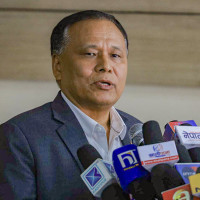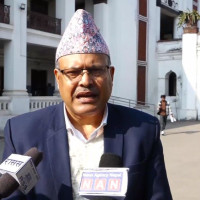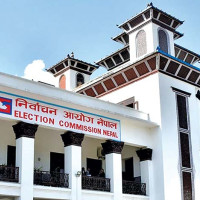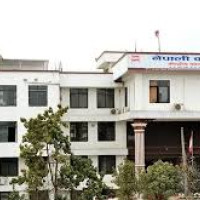- Monday, 29 December 2025
Majority of rescued child labourers deny returning home
By Binu Shrestha,Kathmandu, Aug. 31: Sindhupalchowk’s 15-year-old Ramesh Tamang (name changed) was recently rescued from the Mayur Yatayat bus after a video became viral on social media. Kathmandu Metropolitan City (KMC) has taken immediate action to rescue the child who was working as a helper in the bus.
KMC requested the Mayur Yatayat Committee to present the child at the KMC office. After the bus driver presented the child, KMC sent him to a shelter as he did not want to return home.
Another boy Ishwor Gurung (name changed) at the age of 14 came to Kathmandu from Bhojpur with his three friends to work and earn a living.
He was rescued from a Grill factory in Mahalaxmi Municipality of Lalitpur Metropolitan City recently. He told The Rising Nepal that his father was abroad for employment and his mother, younger brother and sister are at home. He said he did not want to return home.
Angel (also name changed) came to Kathmandu from Sindhuli and worked in a brick factory at the age of 14. Along with him, his younger brother and sister were also pushed into underage labour after their mother left them.
A fragile economic status forced Angel and her brothers and sister to work at the brick factory. “My father is a daily wage earner. Our primary reason for working at this young age is to generate income for subsistence. Had my father been earning enough to support us, I would not have to worry about buying books, pens and pencils," he said.
The weak financial status of the family pushes children into child labour, and they are deprived of education, their basic right.
Despite having a father, mother, brother and sister, they did not want to stay at home and continue their study. The rescued child said that he loved to work in the transport sector rather than go to school. It is difficult to return to study and home for street children and the children who worked in transportation sectors, said Santa Pahadi, Child Welfare Officer at the KMC.
Three rescued children are now living in child safe house of the Esther Benjamins Memorial Foundation.
Dilu Tamang, Rescue Coordinator of the Foundation, said that, currently, children are leaving their homes and are involved in various forms of labour due to the dysfunctional family. Sindhupalchowk’s Tamang was found engaged in child labour for the last seven months, she said.
Neglect from the family induces children to leave their home. Both Tamang and Gurung’s parents want their children to return home but both the children are not willing to return, she said.
“We do not send children to their home until it is not safe for children to return to their families, we will support them in our foster homes for as long as it is needed. We also provide vocational training courses for older children so that they can earn a living and become self-reliant,” said Tamang.
Esther Benjamins Memorial Foundation has already rescued around 1,000 children from different sectors, especially from circus houses in India and hazardous jobs in Nepal.
Children at the safe house receive food, medical service, clothing, education, training and consultation until we can safely reunite them with their families, she added.
“Our Foundation only provides shelter for male children and now seven children are staying here. Child Rescue Nepal provide financial support to our Foundation,” she said.
Among the three rescued children, Tamang is preparing to join school and Gurung is now studying in grade three and Angles in grade five.
KMC has rescued a total of 50 children, including 26 girls and 24 boys to date and has kept them in foster home, said Pahadi, Child Welfare Officer at the KMC.
Among the rescued children, 27 children returned home so far. She further said that the children working as domestic helpers and children working in hotels, hostels and transport sectors are at risk and need protection from the state.
Children who are at risk are categorised in the three colours- Red, yellow and green categories.
Children under the age of 12, who have to work more than 7 hours a day, have faced or are experiencing sexual violence and abuse are classified in the red category.
Children who have to work for two to five hours a day and are trashed and abused, not allowed to eat full stomach and not allowed to sleep enough are kept in the yellow category.
Children who have not been physically and verbally abused and are provided adequate educational materials, have regular contact with their families, have access to enough food and have a bed and room to sleep are classified in the green category.
Pahadi said that the children in the red category are now being rescued.
Aatma Ram Thapa, Executive Director of Esther Benjamins Memorial Foundation, said that notable work was done in the child rights sector but the coordination and collaboration of three levels of government, civil society and non-government organisations were important to create a society where children's labour is not exploited.
Stating that the rights of children should be secured at the local level and children should not be deprived of their basic rights. Thapa stressed the need for schools to be child-friendly to hold them at the school.
Sharing his long working experience in the children's sector, he said that the system of child rights should be enhanced at the local levels and children should be shielded from violence and abuse.
According to 2021’s Nepal Child Labour Report, a whopping 15.3 per cent of Nepal’s child population, that is a total of 1.1 million children, are engaged in some form of labour. It added that 3.3 per cent of child labourers in urban areas and 2.9 per cent in rural areas are involved in hazardous occupations. It also said that underage girls (17 per cent) are more likely to be put to work than boys (14 per cent).
Provisions in the Child Labour (Prohibition and Regulation) Act 2000, the Labour Act 2017, the Act Relating to Children 2018 and the National Civil (Code) Act 2017 also place restrictions on the types of work children can be used in. But exploitation of child labour continues unabated in the country.
















